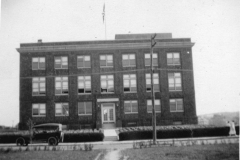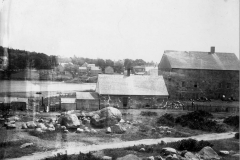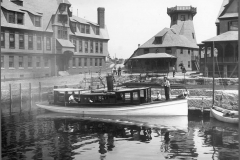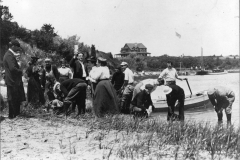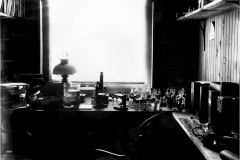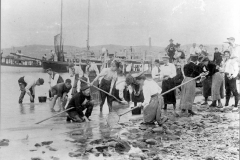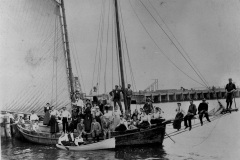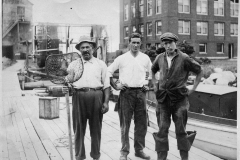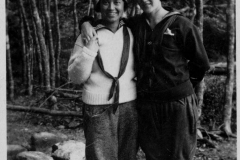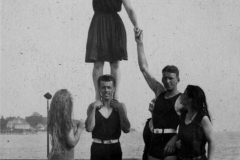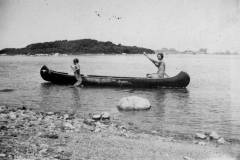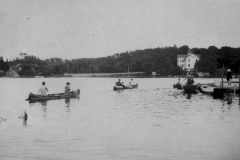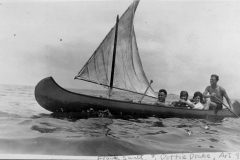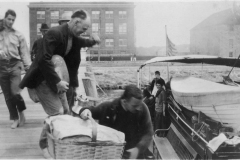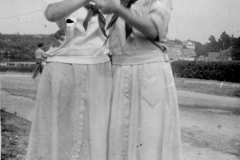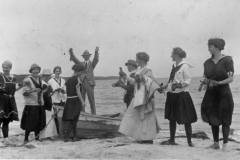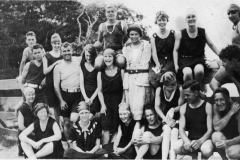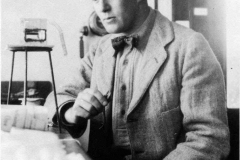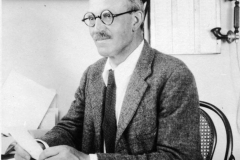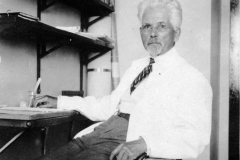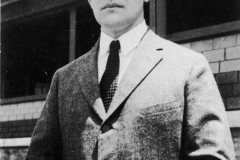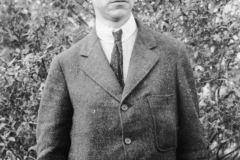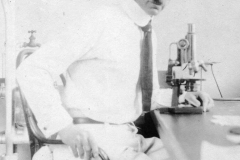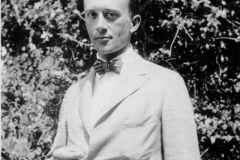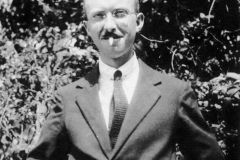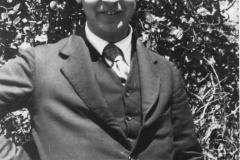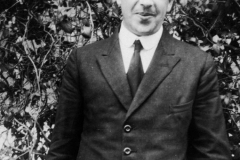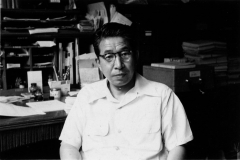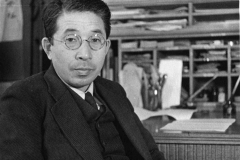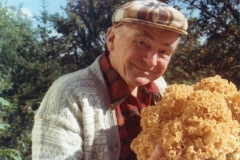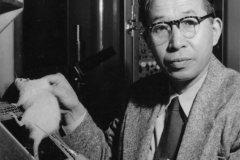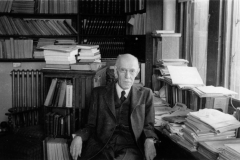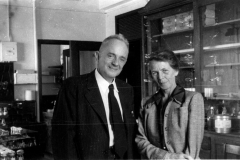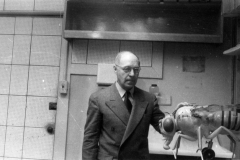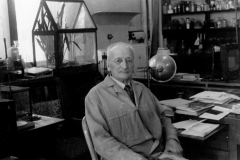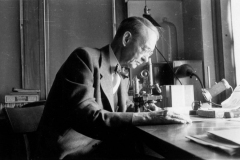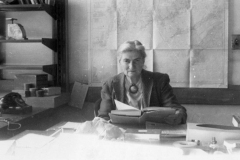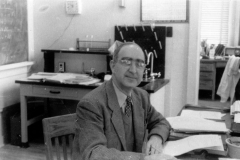The MBL at 125
Summer 2013
During the summer of 2013, the Museum hosted an exhibit honoring the Marine Biological Laboratory for 125 years in Woods Hole. Some of the photos and some of the text from that exhibit are now here on the web.
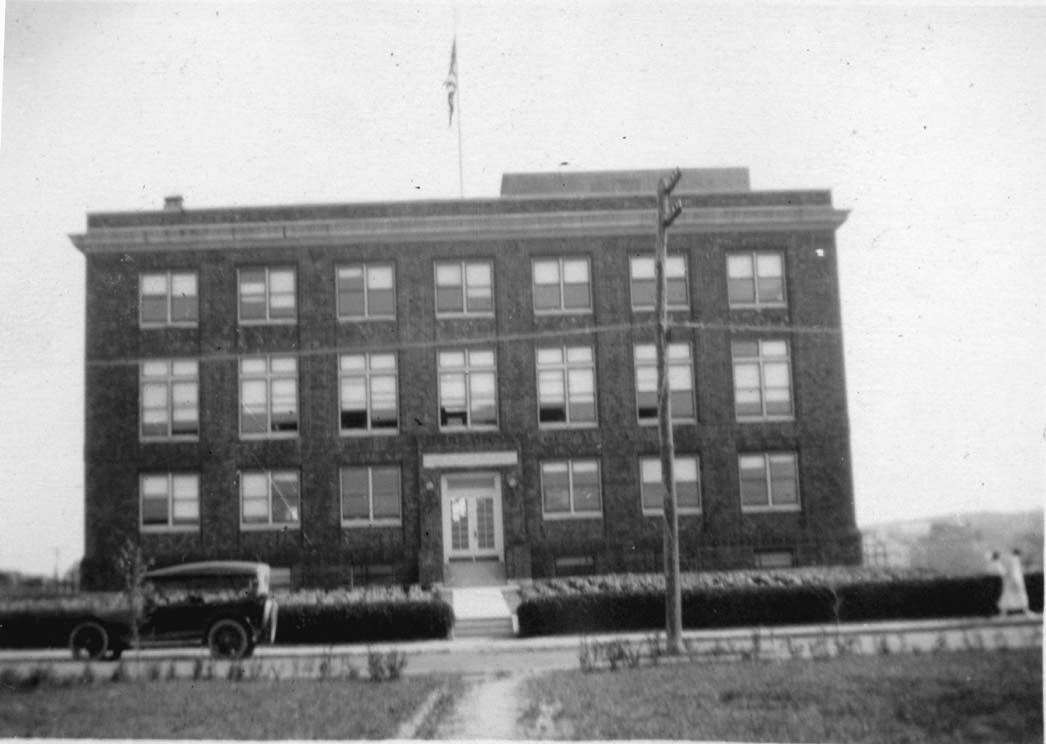
In the Lab and Out Collecting (an excuse for great fun)
An exhibit celebrating the 125th anniversary of the founding of the Marine Biological Laboratory.
Photos from the Museum collection.
In 1880 the Women’s Educational Association in Boston and The Boston Society of Natural History set up a seaside laboratory in Annisquam, Massachusetts. The Curator of the Society, Alpheus Hyatt, was named director. In 1886 Annisquam was closed and Hyatt began a search for a better location for collecting sea life.
Hyatt visited his friend Spencer Baird, Director of the U.S. Fish Commission, who convinced him that Woods Hole would be the ideal spot. Baird had established the Fish Commission here because of the pure water and abundant marine life. He was interested in expanding the research community and encouraged Hyatt to purchase land near the Fisheries.
In the meantime the Educational Association and the Society of Natural History had raised $10,000 and so the Marine Biological laboratory was incorporated in 1888. Scientists, researchers and students from many different universities and institutions came during the summer to gather specimens in local waters and do laboratory research.
C.O. Whitman, who in 1888 was associated with Clark University (Worcester, Massachusetts) and later on with the University of Chicago, was named the first director. Whitman’s vision for the lab was to make it a national institution and a cooperative enterprise of American biologists. Additional members were added to the board from various universities and a number of biologists as well.
In 1880 the Women’s Educational Association in Boston and The Boston Society of Natural History set up a seaside laboratory in Annisquam, Massachusetts. The Curator of the Society, Alpheus Hyatt, was named director. In 1886 Annisquam was closed and Hyatt began a search for a better location for collecting sea life.
Hyatt visited his friend Spencer Baird, Director of the U.S. Fish Commission, who convinced him that Woods Hole would be the ideal spot. Baird had established the Fish Commission here because of the pure water and abundant marine life. He was interested in expanding the research community and encouraged Hyatt to purchase land near the Fisheries.
In the meantime the Educational Association and the Society of Natural History had raised $10,000 and so the Marine Biological laboratory was incorporated in 1888. Scientists, researchers and students from many different universities and institutions came during the summer to gather specimens in local waters and do laboratory research.
C.O. Whitman, who in 1888 was associated with Clark University (Worcester, Massachusetts) and later on with the University of Chicago, was named the first director. Whitman’s vision for the lab was to make it a national institution and a cooperative enterprise of American biologists. Additional members were added to the board from various universities and a number of biologists as well.
Whitman’s goal of rapid expansion was unrelated to the money available. The laboratories were housed in a pair of two-story wooden shingled structures (known as “Old Main”) west of the old Candle House. The MBL then made use of local houses, sheds, barns and other simple wooden structures. These facilities were soon outgrown. Between 1890 and 1896 additions were put on “Old Main”, the mess hall was built, and more labs were constructed. Whitman and the board and trustees grew to be at odds and the institution was reorganized in 1897. Nevertheless there was a serious financial situation over the next few years. Outside universities offered financial support which Whitman rejected.
In 1901 Charles R. Crane became a member of the Corporation. He was President from 1902 to 1926 and took charge of the financial situation. For a period he (and others) covered the Lab’s deficits but eventually he took on most of the operating deficit himself. By 1924-1925 with support from the Rockefeller Foundation John D. Rockefeller, Jr. and the Carnegie Corporation Crane had created a secure endowment for the future of the Lab.
In 1913 the brick and steel Crane Lab had been constructed, designed by Charles A. Coolidge of the Boston firm Coolidge & Shattuck. In 1924 Lillie was built, positioned perpendicular to Crane, also designed by Coolidge and also built of steel and brick with cast concrete ornamentation. The seal of the MBL with its seahorses and other marine creatures was designed at this time and is featured prominently on the facade of Lillie.
During the first 30 or more years of the Marine Biological Laboratory researchers came for the summer and stayed with local families or in MBL’s dormitories. In the 1920s the MBL acquired land from the Fay family estate and created enclaves where scientists and their families built summer cottages or rented small houses from the MBL. This yearly influx swells the population of Woods Hole tremendously. Generations of the same families have bought or built additional homes which they occupy in the summer only, so that in the winter, the village is quiet and less busy.
In the early days of the Lab, scientists, investigators and students went out to the local shores or the islands to gather specimens. Gradually a collecting staff (the Supply Department) was employed, using dedicated boats. But there were also trips in which the summer investigators went along, from trips on the schooner Vigilant, the early motor “launches” Sagitta and Cayadetta to the more modern collecting boats, the Dolphin, Gemma and many others.
Collecting trips made great excuses for picnics and other fun. After all, the MBL investigators were living in a seashore paradise. Time off from laboratory work was easily found – canoe trips to Naushon and picnics along the shore were recorded by the simple cameras of the early 1900s. The families who were generous to the Museum Archives with their photo collections have enriched our knowledge of the summer fun had by the MBL
=======
The MBL began as a summer laboratory, active in that season alone. Research using marine organisms was a new trend in the 1800s for biologists in their investigation into the evolution of all life. MBL also sought to educate and to produce teachers as well as researchers. Many women were involved; marine biology was considered a proper interest for late Victorian females.
Gradually the laboratory became a year-round institution, although it is still swelled by great numbers of summer researchers from universities and colleges, who come to Woods Hole when their regular terms end. A shift in research work has occurred from a more biological orientation to ecology and medicine. Numerous Nobel Prize winners have come from the work done at the MBL.
About the MBL Images in the Museum Collection
Over the years the Museum Archives has been given or loaned many wonderful images from the personal collections of those who either did research at the MBL, worked there or spent summers here. Many of these images are from the years 1912 through the 1920s. Julian Scott took a wonderful series of portraits of major MBL scientists from 1912 to 1920. Julian was a pathologist as well as a photographer. He was called “Wireless” because he wore a hearing aid. He made a paper album of his candid portraits of prominent scientists and listed them with their academic affiliations under the heading “Photographs of Habituees of Wood’s Hole—1912-1920.”
In the late 1990s when the Museum Archives was beginning to digitize its photo collection, we were offered the opportunity to digitize a wonderful family album belonging to the Hibbard-Romer family. The family kept the original but we were given the right to use the images. In addition the family did give us their canoe, featured in many of these photos – the RHAMPHORYNCUS – which you may see hanging on the far wall in our Small Boat Barn. Over the years we have wanted to have an excuse to display the Hibbard-Romer images, since they show summer investigators having so much fun!
More recently we were given a number of original photos by Michael D. Fisher. They include some more fun photos as well as some serious images of laboratory work.
Other images come from the accumulated donations given to the Archives during our almost 40 years as a historical repository. We hope that you enjoy them, although they show a very limited time period and an incomplete view of the MBL. There are a few images which came from the MBL Archives rather than our own; these had been loaned for earlier exhibits and became part of our digital collection.
The earliest images mostly come from the lens of Boston photographer Baldwin Coolidge (1845-1920), who was hired by the MBL in the 1890s to take the annual summer class photos. Coolidge also took many photos of Woods Hole while he was here.
Notes About Canoeing and Clothing
Canoeing. Canoeing was a major fad in the 1920s. MBL scientists, investigators, researchers and students brought their own canoes to Woods Hole and enjoyed the local waters, making trips to the Elizabeth Islands, such as Naushon. Getting across the unpredictable Woods Hole Passage with its swift currents must have been a thrill and a challenge.
Clothing. Women in the 1890s typically wore long skirts (often black) with white blouses, all over layers of undergarments, no matter whether it was summer or not. When they went collecting, they tucked their skirts up in some manner. Bathing suits were also worn: a knee-length dress garment over bloomers and long black stockings.
Notice that from 1916 to the 1920s middy blouses (sailor-style) were popular attire for women out of the lab, along with bloomers (also called knickers) and canvas sneakers (sold by Mrs. Snow’s Dry Goods store on Water Street). Women’s bathing suits were still more or less knee-length and black. Some wore black stockings as well. Still, the picnic participants and canoe-paddlers managed to have a lot of fun!


